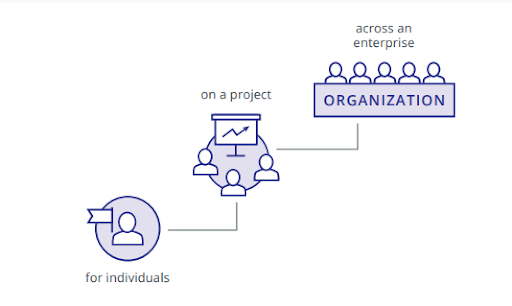Change Management: what is it & why do we need it?
Today’s blog is a high-level review of that taboo “C” word that makes most cringe at work … Change.
We are living in a time of great change. To survive and prosper, organizations must successfully manage large and complex change at increasingly rapid rates. Unfortunately, many organizations leave project success to chance.
Here’s a stat for you: Initiatives with excellent change management are SIX TIMES more likely to meet objectives than those with poor change management (or none). So, hang with me, & I’ll introduce you.
Change Management Increases the Likelihood of Success.
Even when, organizational changes meet technical requirements and milestones, they can still fail to deliver results and benefits. What’s missing? The people who bring these changes to life in their day-to-day work. Your initiatives can impact the following aspects of an individual’s job:
The success of your initiative depends on how individuals in the organization embrace and adopt these changes. The data are abundantly clear. The better we apply change management, the more likely we are to meet project objectives.
So, what exactly is Change Management anyway? Change Management is the application of a structured process & set of tools for leading the people side of change to achieve a desired business outcome. It’s both a process as well as a competency.
Change Management happens at three levels:
For individuals: to enable people’s success by supporting them through their personal change journey
On a project: to increase outcomes and return on investment by driving adoption and usage
Across an enterprise: to deliver strategic intent, mitigate saturation and improve agility by embedding change management Change management at any level ultimately focuses on how to help employees embrace, adopt and utilize a change in their day-to-day work.
Individuals.
The “took kit” for implementing change differs based on which level you are focused on. For example, we use the ADKAR Model (acronym for awareness, desire, knowledge, ability & reinforcement) for individuals. It’s also strongly recommended for mid level and senior level managers, as well as identified influences throughout your organization.
Projects.
If you are a project manager, you would typically introduce and managing using the PROSCI 3 Phase Process.
Breaking down phases down is another day, however just in phase one we would start to ask questions such as:
why are we making this change?
Who is impacted by this initiative and in what ways?
Who are the sponsors we need to involve to make this successful?
Organizations & Enterprises.
To be successful in an environment of rapid, concurrent and continual change, organizations must grow their change capability. A mature change capability means:
Change management is the norm on projects and initiatives
Common change management processes and tools are consistently and constantly applied throughout the organization
People from the very top of the organization to the front line know and fulfill their roles in leading change
Making change management a core capability brings impressive project success across the organization and builds your organization’s capacity to embrace and succeed at constant change.
Would your organization benefit from developing change competency? How would this improve your success and help manage change saturation?
Bring Change Management to Your Organization.
Is your organization considering embedding change management? Call our firm at Smith & Co. Consulting Ltd. We can define your organization’s goals, assess your current state of change management capability, and create a plan to drive your organization forward.
Take good care of yourself,
-Carly Smith, CEO & Principal Consultant
Smith & Co. Consulting Ltd.



